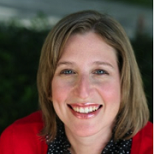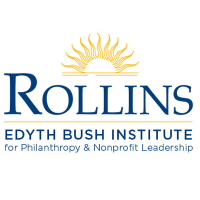 Special to the Philanthropy Journal
Special to the Philanthropy Journal
By Katherine A. Martin
In the 2016 Fundraising Effectiveness Survey Report published by the Fundraising Effectiveness Project, data showed that American nonprofits, on average, gained 100 new donors and lost 96 previous donors in one year. The average donor retention rate nationwide was 46%. And while there was a gain in dollars received, every $100 gained was offset by $91 in losses from gift attrition. The greatest losses in donors came from lapsed new donors from the previous year.[i]
These statistics can give nonprofit development professionals nightmares and the cold sweats.
 Yet there is hope to be found in a Stewardship Plan. If you don’t have one, it’s time to make one. If you haven’t used yours in a while, dust it off, revise it and follow it. If you’re using a plan, test its effectiveness. You can turn the tide of donor losses with time and effort, relationship building and donor engagement.
Yet there is hope to be found in a Stewardship Plan. If you don’t have one, it’s time to make one. If you haven’t used yours in a while, dust it off, revise it and follow it. If you’re using a plan, test its effectiveness. You can turn the tide of donor losses with time and effort, relationship building and donor engagement.
Here are 10 tips to make an effective Stewardship Plan that can work for you.
- Create (and follow) a Stewardship Plan. Written procedures increase the likelihood that your organization will use effective stewardship and will create more rewarding relationships with your donors. Generally, stewardship efforts (i.e., the type of stewardship and who should do it) depend on the size of the gift. Your stewardship plan should use a tiered approach that indicates how donors at different levels of giving will be thanked and stewarded. Use giving societies and honor rolls, donor profiles, press releases, donor appreciation events, mementos, and volunteer opportunities. Find what means the most to each of your donors, and steward them in those ways.
- GRAB your investors. In the words of Terri Chastain, CFRE: “GRAB your investors through Gratitude, Recognition, Acknowledgment, and sharing the Benefits of their investment.” Be sincere and specific about what you are thanking your donor for. Recognize your donor’s investment in a way that is meaningful to them. Promptly acknowledge every donor, every time. Tie stewardship to the impact the donor’s investment will make. [ii]
- Communicate with donors. Communicate with your donors when you’re NOT asking for money. Use newsletters,e-mails, videos, podcasts, websites, non-ask events, etc. to steward your donors.
- Be transparent. Be transparent in your communications with major donors. As your partners, they have the right to know about challenges and complications. They’ll respect your honesty.
- Engage donors. Donors stay connected with organizations that engage them personally (not only their checkbook). Invite them to volunteer, to serve on committees or task forces, to join your board, etc. Ask your donors for suggestions on what you can do better. Show them you care about what they think and respect their suggestions and concerns.
- Involve your board (and volunteers). Assign specific tasks that involve board members and key volunteers in ways that are meaningful to them – whether asking them to help with handwritten thank you notes or thank you calls, helping give organizational tours, hosting stewardship events, or “hosting” a donor at a special event.
- Track your efforts. Use your donor management system to track your stewardship efforts with every donor, including records of all gifts, visits or calls; copies of all correspondence with donors; important comments from donors about why they support your mission; and relationships with other donors, board members, staff, or other volunteers.[iii]
- Measure your success. All Stewardship Plans need to be measured, tweaked and toned. Facing your challenges and your opportunities makes your stewardship efforts even more effective. Your plan should include the following measurements for effectiveness:
- Number of donors retained over time,
- Increase or decrease in gift size and/or frequency,
- Donor’s growing involvement in your organization’s mission and activities, and
- Donor introductions of others to your organization and its mission.
- Steward individuals NOT organizations. It’s important to remember that you can only steward individuals NOT foundations or corporations. To steward a foundation, corporation or other funder, you must steward your contact at the organization to be effective. Make sure you include corporate and foundation contacts in your stewardship plan and process.
- Make it happen. Development and fundraising professionals are busy – there are more things to do than time in the day. Carving out time for stewardship meetings and activities is one of the most important things in a long-term fundraising plan. Not only are loyal donors typically willing to continue to give, they often are interested in major gift campaigns or planned giving options. It is time well spent.
Stewardship isn’t only about saying “thank you.” At its core, stewardship boils down to relationship building and donor engagement. Make stewardship work for your organization and create donor relationships that last.
[i] “2016 Fundraising Effectiveness Survey Report,” Fundraising Effect Project of the Association of Fundraising Professionals, 2016.
[ii] Terri Chastain, “Extreme Stewardship: Paving the Way for Lifelong Investors,” Edyth Bush Institute of Philanthropy & Nonprofit Leadership, 2016.
[iii] Terri Chastain, “Extreme Stewardship: Paving the Way for Lifelong Investors,” Edyth Bush Institute of Philanthropy & Nonprofit Leadership, 2016.
The Edyth Bush Institute for Philanthropy and Nonprofit Leadership strengthens nonprofit and philanthropic organizations through education and management support designed to strengthen board governance, enhance the business practices of nonprofit organizations, and expand the influence of the nonprofit sector. Each year the institute offers certificate programs for nonprofit professionals in Nonprofit Management, Leadership Practice, Volunteer Management, Proposal Writing, Fundraising and Development, and more than 100 workshops and events.
Katherine A. Martin is an Instructor and Training Consultant for the Edyth Bush Institute for Philanthropy & Nonprofit Leadership at the Rollins Crummer Graduate School of Business.




